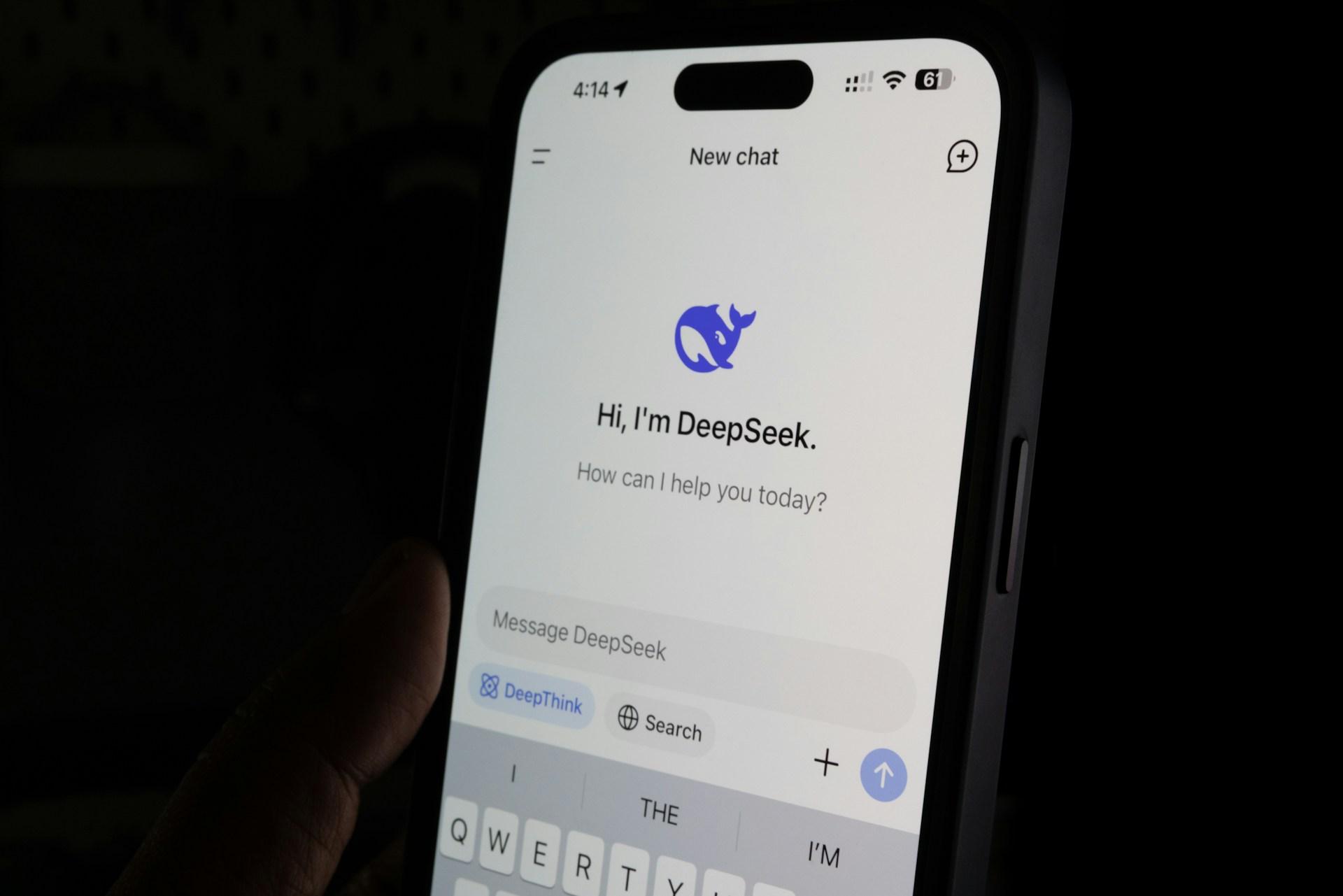Artificial intelligence has become the battleground for global technological dominance, with China and the U.S. competing for leadership. OpenAI’s ChatGPT has long been the frontrunner in the AI chatbot industry, but a new competitor, DeepSeek AI, has emerged from China, stirring debates over its capabilities, open-source approach, and geopolitical implications. Could DeepSeek AI pose a legitimate threat to OpenAI’s dominance, or is this just another hype cycle? Let’s explore the landscape of this evolving AI rivalry.
What is DeepSeek AI?
DeepSeek is an advanced AI language model developed by a Chinese research team with the goal of competing directly with OpenAI’s ChatGPT. Unlike many Western AI models that prioritize ethical guardrails and commercial viability, DeepSeek positions itself as an open-source alternative, allowing developers greater flexibility in AI innovation.
Key Features of DeepSeek:
- Open-source accessibility – DeepSeek provides access to its model architecture, making it appealing to developers and researchers.
- Cost-effectiveness – Its ability to run efficiently on lower-cost hardware gives it an edge in markets where high-end infrastructure isn’t available.
- Multilingual capabilities – The model supports both Chinese and English, making it a direct competitor to OpenAI in non-English-speaking regions.
- Alignment with China’s AI strategy – The Chinese government has long sought AI independence, and DeepSeek could be a crucial part of that vision.
ChatGPT: The Current AI Leader

Since its launch, OpenAI’s ChatGPT has established itself as the industry benchmark for AI chatbots, setting high standards in conversational fluency, contextual understanding, and multimodal capabilities. With each iteration, OpenAI has enhanced ChatGPT’s functionality, and the release of GPT-4, along with its Pro versions, has further solidified its dominance. By integrating real-time web access and advanced reasoning abilities, OpenAI ensures that ChatGPT remains not only a powerful tool for general users but also a valuable asset for businesses, educators, and professionals across various industries.
One of ChatGPT’s key strengths is its proven reliability. Backed by Microsoft, it has gained widespread adoption across businesses and academic institutions, demonstrating its robustness and effectiveness in handling diverse tasks. This strong foundation has made it a trusted AI companion for users worldwide. Additionally, OpenAI continuously rolls out regular updates and advancements, improving ChatGPT’s reasoning capabilities, security measures, and multimodal abilities, such as image and voice processing. These frequent enhancements ensure that ChatGPT remains cutting-edge.
Another major advantage is enterprise integration. Businesses across different sectors leverage ChatGPT for customer service, coding assistance, content creation, and data analysis, making it an indispensable tool for productivity and automation. Its seamless integration into various professional workflows has contributed significantly to its widespread adoption.
Furthermore, OpenAI has placed a strong emphasis on ethical AI development by enforcing robust content moderation policies. ChatGPT is designed to align with ethical guidelines, ensuring responsible AI usage by mitigating harmful content, misinformation, and bias. This commitment to ethical AI has made ChatGPT a preferred choice for users who value safety, reliability, and responsible innovation.
By continuously refining its capabilities and maintaining high ethical standards, OpenAI ensures that ChatGPT remains at the forefront of the AI industry, setting a benchmark that competitors like DeepSeek must strive to match.
DeepSeek AI vs. ChatGPT-4.5: A Head-to-Head Comparison
As AI technology continues to evolve, DeepSeek AI and OpenAI’s latest ChatGPT-4.5 stand out as two powerful contenders. While DeepSeek AI offers an open-source advantage, ChatGPT-4.5 brings faster performance, better security, and enhanced multilingual capabilities.
Let’s break down the key differences:
1. Accessibility
- DeepSeek AI is open-source, allowing developers more control and customization.
- ChatGPT-4.5 remains proprietary but offers a seamless, polished experience with improved accessibility for free users.
2. Language Support
- DeepSeek AI primarily supports Chinese and English, making it a strong choice for the Chinese market.
- ChatGPT-4.5 supports multiple languages with improved fluency and contextual accuracy, making it more global-friendly.
3. Cost and Affordability
- DeepSeek AI operates with lower costs, appealing to budget-conscious users.
- ChatGPT-4.5 remains subscription-based (GPT-4.5 Pro) but now includes enhanced free-tier features, making it more accessible than before.
4. Innovation and Update Speed
- DeepSeek AI is rapidly evolving, but its growth is restricted within China due to regulatory factors.
- OpenAI pushes frequent updates to ChatGPT-4.5, improving speed, multimodal capabilities, and user experience.
5. Security and Ethical Considerations
- DeepSeek AI has fewer content restrictions, which can lead to potential misuse.
- ChatGPT-4.5 includes stronger content moderation, fact-checking, and ethical safeguards, making it a safer AI choice for businesses and professionals.
The Geopolitical Impact: AI and Global Power Struggles
AI is no longer just a technological advancement—it’s a geopolitical tool. With DeepSeek emerging as a viable alternative, concerns have been raised regarding:
- Data security – Could China leverage DeepSeek for large-scale data collection?
- AI regulations – OpenAI faces strict regulatory scrutiny in the U.S. and Europe, while China’s AI sector operates within a government-monitored ecosystem.
- Market control – A more accessible, low-cost AI like DeepSeek could attract emerging markets away from OpenAI and Western AI firms.
DeepSeek AI Bans: U.S. States Restricting Chinese AI Technology
Growing concerns over cybersecurity and data privacy have led several U.S. states to ban DeepSeek AI. Authorities fear that Chinese AI models might facilitate surveillance or unauthorized data collection. States like Texas, Florida, and Montana have imposed restrictions, barring government agencies and businesses from using Chinese-developed AI. This aligns with broader U.S. efforts to curb China’s tech influence, including previous actions against Huawei and TikTok. As AI regulations become stricter, DeepSeek faces increasing hurdles in Western markets, potentially limiting its global reach.
The Open-Source Debate: Advantage or Risk?
DeepSeek’s open-source nature is a double-edged sword. On one hand, it encourages global AI innovation, allowing independent developers and companies to build upon its framework. On the other, it raises security and ethical concerns, as bad actors could exploit AI for misinformation campaigns or hacking.
OpenAI, on the other hand, has been more cautious in sharing its model’s internal workings due to fears of misuse and regulatory issues. The competition between the two approaches—open-source versus controlled AI—will define the future of AI governance.
Challenges DeepSeek Faces
While DeepSeek has garnered significant attention, it still faces multiple hurdles:
- Limited international adoption – While popular in China, it has yet to make significant inroads into Western markets.
- Censorship concerns – Users have reported that DeepSeek avoids politically sensitive topics, which could impact trust and adoption.
- Infrastructure dependency – China’s AI models rely on chips and infrastructure that are still heavily restricted due to U.S. sanctions on high-end semiconductors.
- Ethical scrutiny – As AI regulations tighten globally, DeepSeek may face challenges in meeting compliance standards in areas like the EU and the U.S.
What This Means for OpenAI
Despite DeepSeek’s rapid rise, OpenAI remains in a dominant position within the AI industry. However, the growing competition from China could push OpenAI to make several strategic adjustments to maintain its edge. One key area of focus may be cost reduction. OpenAI could explore more budget-friendly versions of ChatGPT, ensuring affordability for a broader audience while still maintaining high-quality performance. By offering lower-cost alternatives, OpenAI can appeal to businesses and individuals who may otherwise be drawn to DeepSeek’s more cost-effective AI solutions.
Additionally, OpenAI may need to expand its language capabilities to compete with DeepSeek’s growing influence in the Chinese market. While ChatGPT already supports multiple languages, enhancing its proficiency in Chinese and other non-English languages could strengthen its global reach and user base. Investing in advanced multilingual support would not only improve accessibility for international users but also position OpenAI as a more inclusive AI provider.
Transparency could also become a crucial factor in OpenAI’s strategy. As DeepSeek promotes itself as an open-source AI model, OpenAI might need to strike a balance between proprietary development and offering greater transparency in its AI processes. By providing clearer insights into its model’s training methods, ethical guidelines, and data handling, OpenAI could build more trust among users and regulatory bodies, ensuring compliance with evolving AI governance standards.
Finally, improving the efficiency of AI models will be essential in countering DeepSeek’s cost advantage. OpenAI could focus on optimizing its AI to function seamlessly on lower-end hardware, making its technology more accessible to a wider audience. By enhancing performance while reducing computational requirements, OpenAI can maintain its competitive edge without compromising on quality. These strategic moves will be critical in ensuring that OpenAI continues to lead the AI landscape despite rising competition from Chinese AI models like DeepSeek.

